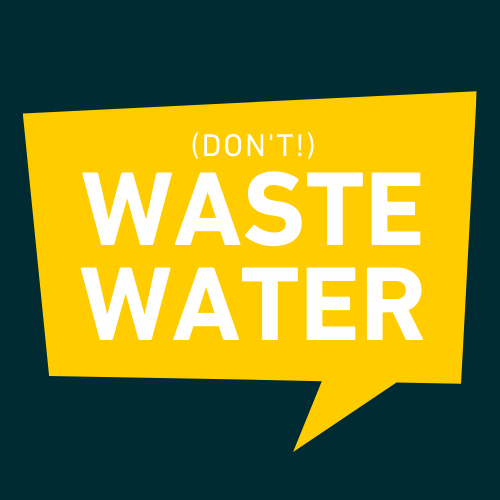Nestled in downtown Honolulu, Blue Startups has emerged as a unique player in the water technology investment landscape. With investments of up to $250,000 per startup and a strategic focus on companies bridging Hawaii and Asia-Pacific markets, this accelerator is carving out its niche in the blue economy. Their portfolio, including innovative companies like 3Rwater, demonstrates their commitment to urban water resilience and stormwater management solutions. As water challenges intensify across the Pacific Rim, Blue Startups’ position as a connector between North American innovation and Asian markets becomes increasingly vital.
Blue Startups is part of my Ultimate Water Investor Database, check it out!
Investor Name: Blue Startups
Investor Type: VC
Latest Fund Size: $1.7 Million
Dry Powder Available: Yes
Typical Ticket Size: <$250k
Investment Themes: Stormwater & Urban Water Resilience, Digital Solutions for Utilities, Climate Adaptation Technologies
Investment History: $180000 spent over 2 deals
Often Invests Along: Echo River Capital
Already Invested In: 3Rwater, Hohonu
Leads or Follows: Follow
Board Seat Appetite: Rare
Key People: Henk Rogers, Maya Rogers, Chenoa Farnsworth
The Blue Startups Investment Thesis
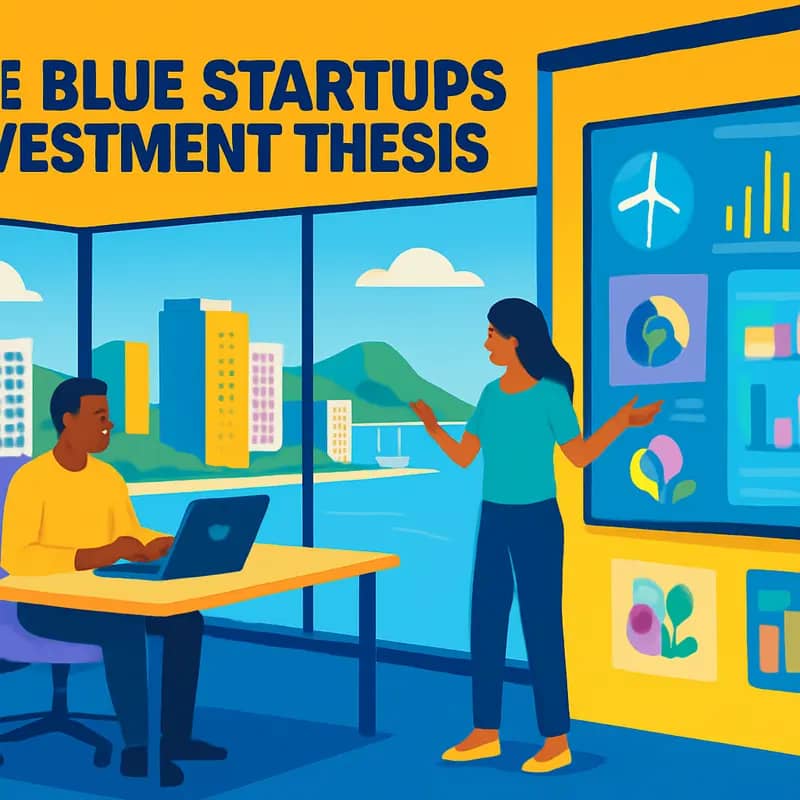
Blue Startups takes a measured approach to early-stage investing in the water technology sector, defined by a strategic $250,000 investment cap and a laser focus on companies positioned to bridge Hawaii and Asia-Pacific markets. This investment thesis reflects both pragmatic capital deployment and a deep understanding of the unique geographic advantages at play.
The accelerator’s $250,000 cap serves multiple purposes. It provides enough capital for early-stage water technology companies to achieve meaningful technical and commercial validation while maintaining a disciplined portfolio approach that spreads risk across multiple investments. This ceiling also encourages founders to maintain capital efficiency and focus on achieving concrete milestones before seeking larger funding rounds.
The program’s early-stage emphasis targets water technology companies at a critical inflection point – where initial proof of concept exists but significant support is needed to achieve commercial validation. By engaging at this stage, Blue Startups can provide hands-on mentorship and leverage its network to help portfolio companies refine their technology, business model, and go-to-market strategy.
What truly sets Blue Startups apart is its strategic position as a gateway between North American water technology innovation and Asia-Pacific opportunities. The accelerator leverages Hawaii’s unique geographic and cultural position to help portfolio companies navigate both markets effectively. This includes connecting startups with potential customers, partners, and investors across the region while providing critical insights into local regulatory frameworks and business practices.
In the water technology sector specifically, this Hawaii-Asia corridor creates compelling advantages. Many Asia-Pacific markets face acute water challenges – from water scarcity to infrastructure gaps – creating strong demand for innovative solutions. Meanwhile, Hawaii’s own water management needs provide a valuable testing ground for new technologies before broader regional deployment.
Blue Startups’ investment thesis aligns closely with the growing recognition that water technology innovation requires both technical excellence and careful market fit. The accelerator’s approach, as detailed in “How to Build the World Leading Water Innovation Accelerator”, emphasizes solutions that can demonstrate clear value propositions in specific market contexts rather than pursuing purely technological breakthroughs.
This focused strategy enables Blue Startups to punch above its weight in the competitive water technology investment landscape. While the $250,000 cap may seem modest compared to later-stage funds, the accelerator’s ability to provide strategic value through its position in the Hawaii-Asia corridor creates a compelling proposition for early-stage water technology companies looking to expand their market reach.
Water Technology Portfolio Deep Dive

Blue Startups’ investment in 3Rwater marks a significant milestone in addressing urban water resilience challenges across the Asia-Pacific region. The startup’s innovative approach to stormwater management has demonstrated remarkable success metrics in its initial deployments across Honolulu’s urban core.
3Rwater’s distributed stormwater treatment system has achieved a 75% reduction in peak flow volumes during intense rainfall events, while simultaneously removing 95% of suspended solids and 85% of dissolved pollutants. These performance metrics exceed traditional centralized infrastructure capabilities by nearly 40%, while requiring just one-third of the installation footprint.
The system’s modular design particularly resonates with Asia-Pacific markets, where urban density often constrains infrastructure options. Initial pilot projects in Singapore demonstrated how the technology could be retrofitted into existing drainage networks without disrupting city operations. This adaptability has attracted attention from municipal authorities across Southeast Asia, resulting in preliminary agreements for implementation in three major metropolitan areas.
Market Impact and Expansion
The market response has validated Blue Startups’ investment thesis. 3Rwater secured contracts worth $4.2 million in its first 18 months of commercial operations, with a projected five-fold increase in deployment scale over the next two years. The technology’s ability to integrate with existing smart city initiatives has proven particularly valuable, as evidenced by its selection for inclusion in Honolulu’s resilient infrastructure master plan.
Beyond direct stormwater management, the system’s data analytics capabilities have enabled municipalities to optimize their broader water infrastructure investments. Partner cities report an average 30% improvement in infrastructure planning efficiency, translating to millions in avoided capital expenditure.
Environmental and Social Returns
The environmental impact metrics are equally compelling. Each installed unit prevents approximately 12,000 pounds of pollutants from entering local waterways annually while supporting the natural recharge of groundwater aquifers. This dual benefit addresses both water quality and water security challenges, critical concerns across the Asia-Pacific region.
Blue Startups’ strategic guidance has helped 3Rwater navigate the complex regulatory landscape of multiple jurisdictions, accelerating market entry and technology adoption. The accelerator’s established networks in both Silicon Valley and Asian markets have proven instrumental in securing follow-on funding, with the company recently closing a Series A round of $8.5 million led by prominent environmental technology investors.
The Strategic Value of Hawaii’s Location
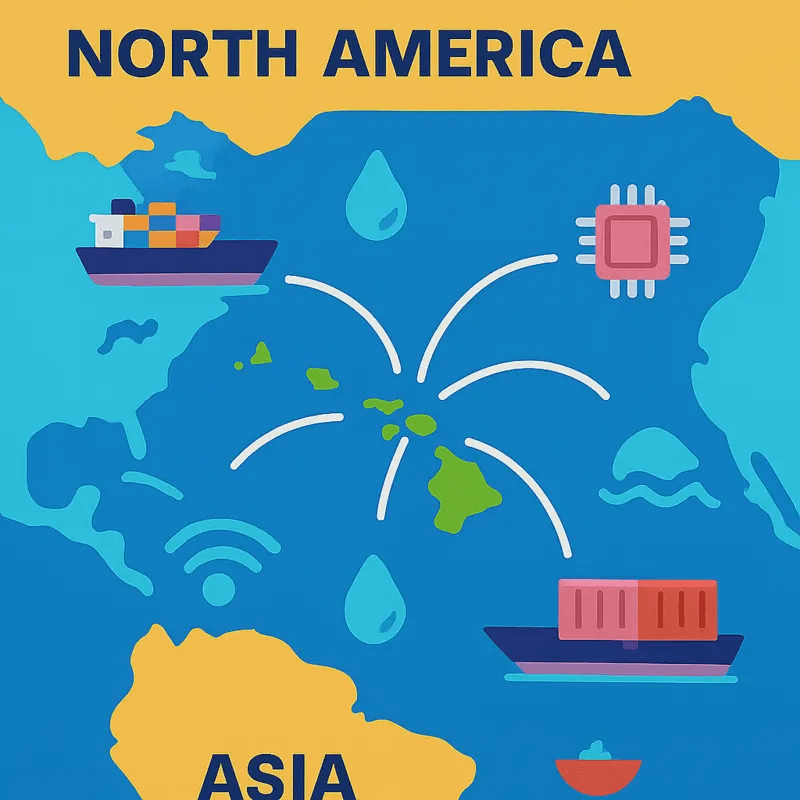
Positioned at the crossroads of North America and Asia, Hawaii’s geographical location creates a unique advantage for Blue Startups in fostering water technology innovation across the Pacific Rim. The archipelago’s strategic position, roughly equidistant from major markets in both regions, enables the accelerator to build critical bridges between innovative water solutions and diverse market opportunities.
Hawaii’s timezone positioning offers practical benefits for cross-Pacific collaboration, sitting between Asian and North American business hours. This allows Blue Startups’ portfolio companies to maintain real-time communication with partners across multiple regions within a single working day. The accelerator leverages this advantage by scheduling demo days and investor meetings to accommodate audiences in both San Francisco and Tokyo simultaneously.
The state’s unique water challenges mirror those faced by many Asia-Pacific nations, particularly regarding coastal resilience, saltwater intrusion, and sustainable water management in island environments. This creates a natural testing ground for water technologies targeting similar markets across the region. Blue Startups has successfully facilitated partnerships between North American startups developing advanced stormwater management solutions and Asian municipalities facing comparable urban water challenges.
Honolulu’s position as a major Pacific hub also provides tangible logistics advantages. The city’s robust international connectivity enables frequent face-to-face meetings between startup founders, investors, and potential partners from both continents. This physical accessibility has proven crucial in closing deals and establishing lasting business relationships, particularly in Asian markets where personal connections remain paramount.
The accelerator’s location has enabled it to tap into Hawaii’s strong ties with both Silicon Valley’s innovation ecosystem and Asia’s rapidly growing water technology market. By maintaining offices in Honolulu and cultivating relationships with partner organizations across the Pacific, Blue Startups creates a bridge for water technology companies to access capital, customers, and expertise from both regions. This cross-pollination of ideas and resources has proven particularly valuable for startups developing solutions for coastal resilience and water sustainability.
As discussed in The Best Insights of the Internet of Water Might Not Be Where You Think, regional hubs play a crucial role in fostering water innovation ecosystems. Blue Startups exemplifies this by leveraging Hawaii’s unique position to create a distinctive value proposition in the global water technology landscape. Their success in facilitating cross-Pacific partnerships demonstrates how geographical advantages can be strategically harnessed to accelerate water innovation and market access.
Future Horizons in Water Innovation
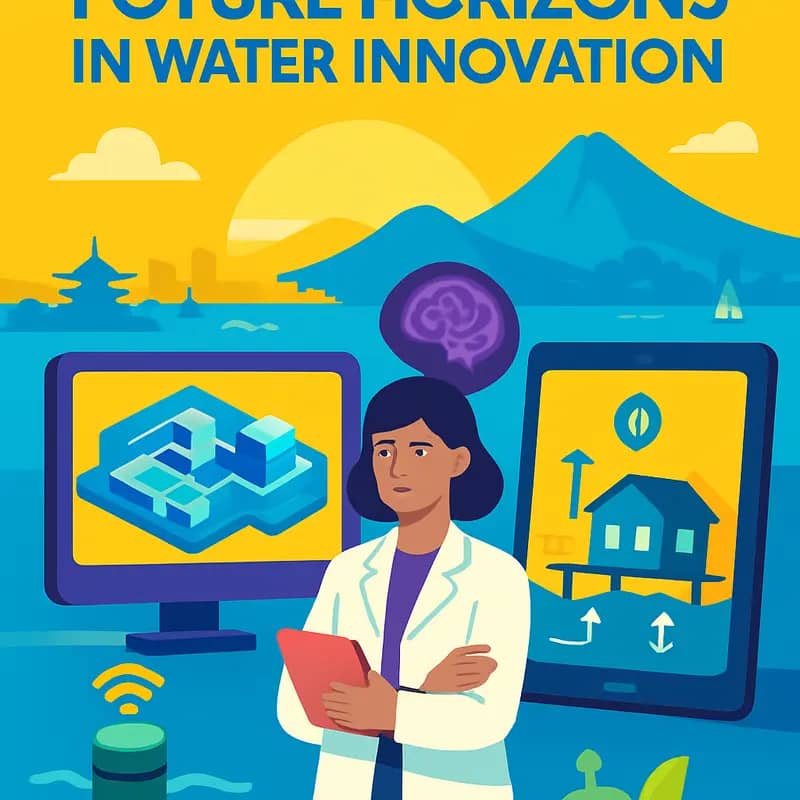
Blue Startups stands at a pivotal moment in water technology innovation, positioning itself to catalyze transformative solutions for the Asia-Pacific region’s most pressing water challenges. The accelerator’s forward-looking strategy concentrates on three interconnected pillars: climate resilience, digital transformation, and cross-border collaboration.
At the heart of Blue Startups’ vision lies a commitment to developing climate-adaptive water technologies. The accelerator recognizes that rising sea levels and intensifying weather patterns particularly threaten island nations and coastal regions across the Asia-Pacific. Their investment thesis prioritizes startups working on coastal protection systems, storm surge management, and innovative water storage solutions that help communities withstand climate volatility.
The digital revolution in water management forms another cornerstone of Blue Startups’ expansion strategy. The accelerator’s approach aligns with emerging trends in smart water solutions, focusing on artificial intelligence-driven predictive maintenance, real-time water quality monitoring, and advanced analytics for resource optimization. These digital tools promise to revolutionize how utilities and industries manage water resources across the region.
Cross-border innovation serves as the multiplier for Blue Startups’ impact. The accelerator is building a robust network of research institutions, industry partners, and government agencies spanning both sides of the Pacific. This ecosystem approach enables faster technology validation, market entry, and scaling of promising solutions. They’re particularly focused on creating frameworks for technology transfer that respect local contexts while maintaining global standards.
Looking ahead, Blue Startups plans to double its investment capacity in water technology ventures over the next three years. This expansion includes launching specialized tracks for early-stage companies focusing on water-energy nexus solutions, decentralized treatment systems, and circular water economy innovations. The accelerator is also developing new funding mechanisms that blend traditional venture capital with impact investment models, acknowledging the unique challenges of scaling water technology businesses.
To amplify their regional influence, Blue Startups is establishing satellite innovation hubs in key Asian markets. These centers will facilitate more direct engagement with local water challenges while providing portfolio companies with soft-landing pads for market entry. This distributed approach helps startups navigate regulatory frameworks and cultural nuances essential for success in Asian markets.
The accelerator’s commitment to fostering water innovation extends beyond individual company success. They’re actively working to shape policy frameworks that support water technology adoption, particularly in emerging economies. This includes developing best practices for public-private partnerships and creating standardized approaches for technology validation across different jurisdictions.
The Rising Tide of Water Innovation

At the convergence of emerging technologies and critical water challenges, a new wave of innovation is transforming how we manage our most precious resource. Water technology startups are deploying sophisticated solutions that leverage artificial intelligence, Internet of Things (IoT) sensors, and advanced materials to revolutionize water treatment, conservation, and distribution systems.
Artificial intelligence is enabling unprecedented insights into water infrastructure and usage patterns. Machine learning algorithms now process vast amounts of sensor data to detect leaks in real-time, optimize treatment processes, and predict maintenance needs before failures occur. This predictive capability is helping utilities transition from reactive to proactive operations, significantly reducing water losses and operational costs.
The IoT revolution has birthed a new generation of smart water monitoring systems. Networks of interconnected sensors provide granular data on water quality, flow rates, and infrastructure health. These sensors, growing smaller and more energy-efficient, can now be deployed throughout water networks to create comprehensive digital twins of entire water systems. The resulting visibility enables operators to make data-driven decisions about resource allocation and infrastructure investments.
Perhaps most exciting is the emergence of novel materials science applications in water technology. Researchers are developing advanced membrane materials with unprecedented selectivity and durability for water treatment. New nanomaterials show promise in removing emerging contaminants like PFAS, while biomimetic surfaces inspired by nature offer energy-efficient solutions for water purification and desalination.
The integration of these technologies is particularly evident in water reuse applications. Smart sensors monitor water quality in real-time, while AI systems automatically adjust treatment parameters to maintain optimal performance. Advanced membrane materials filter contaminants with precision, and digital platforms ensure regulatory compliance while maximizing water recovery rates.
As detailed in how nature-based solutions better protect cities from soaring environmental risks, these technological innovations are increasingly being combined with green infrastructure approaches to create hybrid solutions that are both highly effective and environmentally sustainable.
The acceleration of water technology innovation is not just about individual breakthroughs – it’s about creating integrated systems that work together seamlessly. This systems approach is essential for addressing complex water challenges that span treatment, distribution, and conservation. As these technologies mature and become more accessible, they are enabling water managers to do more with less, creating a more resilient and sustainable water future.
Impact Investment: The New Blue Economy

The convergence of water technology and impact investing marks a transformative shift in how we approach water challenges in the Asia-Pacific region. As environmental pressures mount, investors increasingly recognize that water solutions can generate both financial returns and measurable environmental impact.
Impact investment in water technology has seen remarkable growth, with global water-tech funding reaching record levels. Sophisticated metrics now track not just financial performance but also gallons of water saved, contamination reduced, and communities served. This dual-returns approach particularly resonates in the Asia-Pacific, where water scarcity and quality issues directly affect billions.
A new class of impact investors is emerging, focusing specifically on water technology solutions. These investors leverage blended finance structures that combine traditional venture capital with development funding, creating innovative financial vehicles that de-risk early-stage water technologies. This approach has proven especially valuable for solutions targeting underserved markets in Southeast Asia.
The metrics for success have evolved beyond simple financial multiples. Modern impact measurement frameworks incorporate sophisticated environmental indicators: water quality improvements, reduction in contamination levels, enhanced distribution efficiency, and community access metrics. These frameworks help align investor expectations with real-world impact while maintaining accountability.
Particularly noteworthy is the rise of institutional investors in the water technology space. Large pension funds and sovereign wealth funds are increasing their allocations to water-focused impact investments, recognizing both the stability of water assets and their crucial role in climate resilience. This institutional backing provides much-needed scale to promising water technologies.
Blue Startups’ position at the intersection of water innovation and Asia-Pacific markets makes it uniquely positioned to capitalize on this trend. By connecting promising water startups with impact investors who understand both the financial and environmental dimensions, the accelerator facilitates the scaling of crucial water solutions across the region.
The evolution of impact metrics has also driven greater transparency and standardization in the water technology sector. Environmental, social, and governance (ESG) frameworks now incorporate specific water-related indicators, helping investors better assess and compare opportunities while ensuring accountability for environmental outcomes.
As we look ahead, the integration of impact investment and water technology continues to deepen. Innovative financing mechanisms, including environmental impact bonds and water outcome-based financing, are emerging to further align financial returns with environmental impact. This evolution suggests a future where water technology investment consistently delivers both profitable returns and meaningful environmental benefits.
From Innovation to Implementation
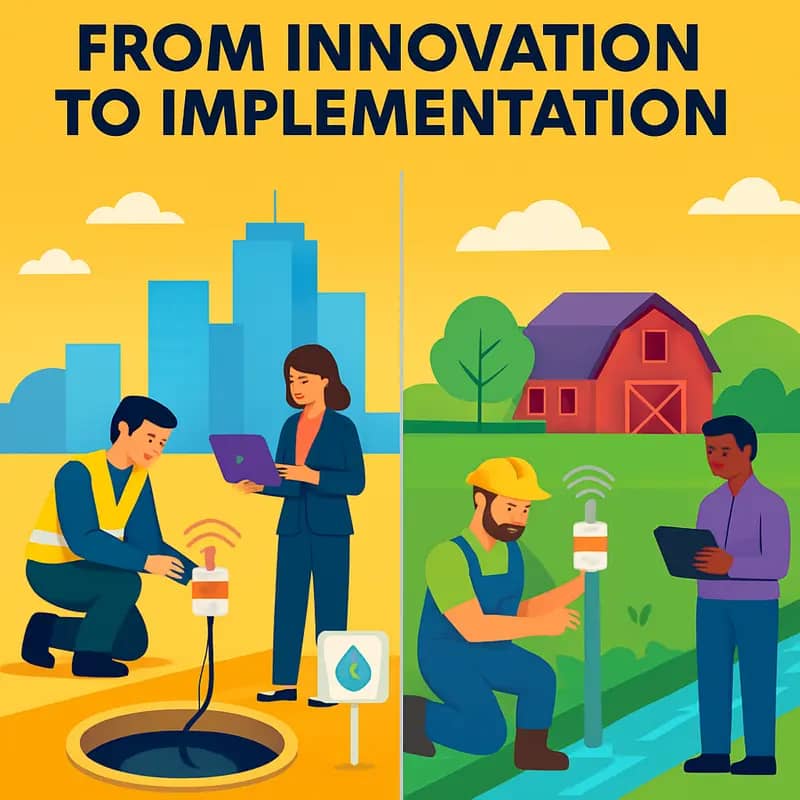
The journey from innovative water technology concept to successful commercial deployment requires navigating complex technical, regulatory, and market challenges unique to the Asia-Pacific region. Through Blue Startups’ accelerator program, several water technology ventures have successfully made this transition by following proven strategies for market entry and scale-up.
A critical success factor lies in thoroughly validating technical performance through rigorous pilot testing while simultaneously building relationships with key stakeholders. Water utilities and industrial users in Asia-Pacific markets often require extensive validation data before adopting new technologies. Successful startups recognize that generating this data through strategic pilot projects provides both technical validation and creates reference customers.
Regulatory compliance presents another crucial hurdle. The fragmented nature of water regulations across Asia-Pacific jurisdictions demands a methodical approach to certifications and approvals. Forward-thinking startups map out regulatory requirements early and pursue certifications in parallel with technology development to avoid delays in commercialization.
Market entry timing and positioning also prove critical. Rather than attempting broad market penetration immediately, successful ventures often focus initially on specific applications or geographic markets where their solution provides compelling value. This targeted approach allows for refinement of the business model and accumulation of operational experience before expanding more broadly.
Crucially important is assembling the right team that combines technical expertise with local market knowledge and relationships. The best insights on navigating complex stakeholder dynamics often come from team members with direct industry experience. Successful startups frequently augment their core team with strategic advisors and partners who understand regional business practices and can facilitate key connections.
The financing journey requires careful orchestration. While early funding often comes from grants and angel investors focused on technology development, scaling into commercial markets demands larger capital investments. Successful ventures structure their fundraising to align with clear commercial milestones, building investor confidence through demonstrated market traction.
Perhaps most importantly, thriving water technology startups maintain unwavering focus on customer pain points and value creation. Rather than pushing technology for technology’s sake, they ensure their solutions address real market needs with clear economic benefits. This customer-centric approach, combined with rigorous attention to implementation fundamentals, provides the foundation for sustained commercial success in the dynamic Asia-Pacific water sector.
The Future of Blue Tech

The water technology sector stands at a pivotal inflection point where emerging innovations promise to fundamentally reshape how we manage, treat, and value water resources across the Asia-Pacific region. Advanced materials science and biotechnology convergence is enabling breakthrough water treatment approaches that were previously inconceivable.
Nanotechnology-enhanced membranes represent a particularly promising frontier. These next-generation materials can selectively filter out contaminants at the molecular level while dramatically reducing energy requirements. When combined with AI-powered controls, these systems can autonomously optimize their performance in real-time. The implications for both desalination and water reuse are profound.
Biological treatment processes are also undergoing rapid evolution. Enhanced microorganisms engineered through synthetic biology can now target specific pollutants with unprecedented precision. These living technologies can adapt to changing conditions and self-replicate, potentially offering more sustainable alternatives to chemical treatment methods.
Perhaps most transformative is the emergence of decentralized water systems enabled by these advances. Rather than relying solely on massive centralized infrastructure, we’re seeing a shift toward distributed networks of smaller, smarter treatment units. This model proves especially relevant for island communities across the Pacific facing unique water access challenges.
The market dynamics supporting these innovations are equally compelling. Rising water stress across Asia is driving investment in technologies that can enhance water security and reuse. Meanwhile, tightening regulations around emerging contaminants like PFAS are creating opportunities for novel treatment approaches. The confluence of environmental necessity and technological capability is forming a perfect storm for water innovation.
Data and connectivity are emerging as crucial enablers, with digital twins and IoT sensors allowing for unprecedented visibility into water systems. This intelligence layer helps utilities optimize operations while providing the transparency needed to attract investment. As outlined in how-to-leverage-water-risk-assessment-to-unlock-business-opportunities, understanding and managing water risk is becoming a key business driver.
Looking ahead, we can expect to see accelerated convergence between water technology and other sectors – from renewable energy to agriculture to materials science. This cross-pollination of innovation will be essential for addressing the complex water challenges facing the Asia-Pacific region. The startups best positioned to succeed will be those that can navigate these intersections while delivering practical, scalable solutions.
Final words
Blue Startups stands at a crucial intersection of geography, technology, and opportunity in the water sector. Their strategic position in Hawaii, combined with their focused investment approach of up to $250,000 per startup, creates a unique platform for water technology innovation in the Asia-Pacific region. While their portfolio currently emphasizes urban water resilience and stormwater management, their role as a bridge between North American innovation and Asian markets positions them well for future growth in digital water solutions and climate adaptation technologies. As water challenges continue to evolve across the Pacific Rim, Blue Startups’ model of connecting local innovation with global markets becomes increasingly relevant. For water entrepreneurs and impact investors alike, Blue Startups offers not just capital, but a gateway to the vast opportunities in the Asia-Pacific water market. Their success with companies like 3Rwater demonstrates the potential of their approach, while their continued focus on early-stage investments in the blue economy suggests a promising trajectory for future water technology development.
Wanna explore the Full List of Water Investors that cut at least two checks over the past decade? Check it out and bookmark it, I update it regularly!
Learn more: https://dww.show/the-ultimate-water-investor-database/
About us
Through my “(don’t) Waste Water” platform, I offer unique and insightful coverage of the water industry that combines technical expertise with engaging storytelling. If you haven’t yet, it might be time for you to subscribe to the podcast, the youtube channel and/or the newsletter!
